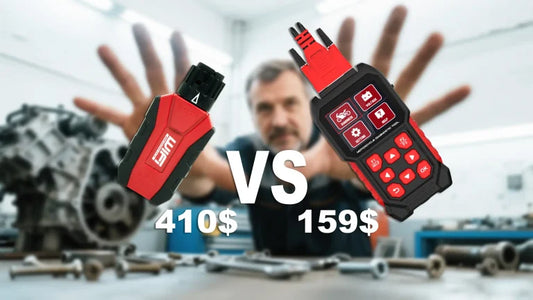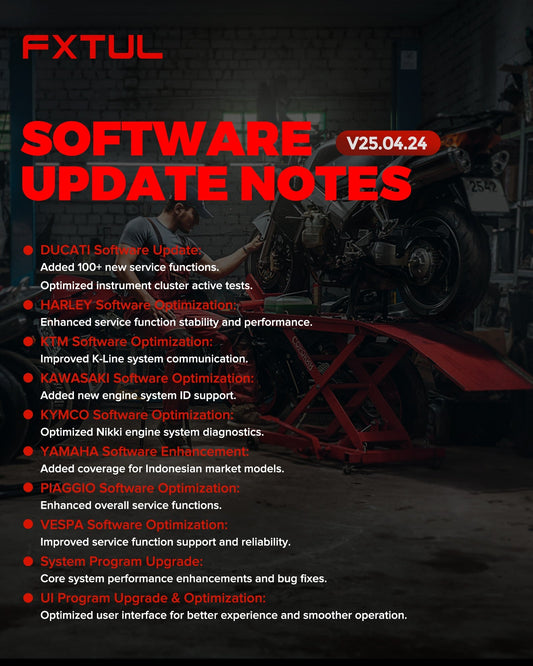A dead battery, the number one motorcycle embarrassment
There's nothing more frustrating than getting ready to go for a ride, only to hear a click or a weak squeak from the starter motor. A dead battery is one of the most common motorcycle problems, especially for owners who don't ride often or need to keep their motorcycles closed seasonally.
Batteries are consumables, but improper use and care can significantly shorten their lifespan. Understanding the causes of a dead battery and taking the right preventative measures can not only save you from the embarrassment of pushing your motorcycle but also save you the unnecessary expense of frequent battery replacements.
Why do batteries lose charge?
To solve the problem, we first need to understand it. The root cause of battery loss is that the rate of discharge is greater than the rate of charge.
1. Natural discharge (self-discharge): All lead-acid batteries (including AGM) and lithium batteries slowly self-discharge even when idle; this is a chemical property.
2. Quiescent current (dark current): Even when the ignition is off, some onboard devices, such as the ECU, clock, and immobilizer, still consume a small amount of power. Original motorcycles are typically small, but added GPS and immobilizers can consume significant power.
3. Short circuit during storage: A metal object on a keychain accidentally triggers a switch, causing the headlights and brake lights to remain on after parking.
4. Charging system malfunction: A malfunction in the motorcycle's magneto or rectifier (voltage regulator) prevents the battery from charging while riding.
5. Frequent short-distance riding: Each start consumes a large amount of power, but the ride time is too short, so the engine stalls before the battery is fully charged. 6. Extreme temperatures: Severe cold can significantly reduce the chemical reaction efficiency of the battery, resulting in a decrease in power.
Good Habits for Daily Riding—Keep Your Battery Well-Fed and Warm
1. Eliminate Short-Distance Abuse:
· Issue: The energy consumed in a single ignition may require 15-20 minutes of mid-to-high-speed engine operation to replenish.
· Solution: If your rides are only a few minutes each time, the battery will remain chronically “starved.” Schedule at least one continuous ride of 30 minutes or more per week to allow the charging system to fully replenish the battery.
2. Always Turn Off Lights When Parking:
· Make it a habit to check that headlights and turn signals are off before dismounting. This is especially important for models without an “AUTO” setting, where headlights must be manually switched off.
3. Regularly inspect terminals:
· Periodically check battery terminals for looseness or green/white corrosion. If present, disconnect terminals (negative first, then positive!), pour hot water over them, and scrub clean with a wire brush. Reconnect and tighten (positive first, then negative!), then apply a small amount of grease to prevent further corrosion.
Long-Term Idle Preparation Guide (Especially for Winter Storage)
This is the most critical step to prevent battery depletion. Please strictly adhere to it.
Option 1: Use a Smart Charger/Float Charger
This is the most effective, scientific, and recommended method.
· Why? Smart chargers automatically adjust charging modes (fast charge → slow charge → float charge) based on battery condition. Upon full charge, they switch to a micro-current float mode that counteracts self-discharge, maintaining the battery at 100% capacity without overcharging.
· How to do it:
1. Remove the battery (if feasible) or connect wires directly from the vehicle.
2. Attach the charger's positive and negative clamps to the battery terminals (positive first, then negative).
3. Power on the charger for a “set-and-forget” solution. It can remain connected throughout the entire vehicle storage period.
· Purchase Recommendations: Choose a reputable brand's “smart pulse charger” or “trickle float charger,” preferably compatible with multiple battery types including lead-acid (AGM included) and lithium batteries.
Option 2: Physical Isolation — Disconnect the Negative Terminal
· Applicable Scenarios: When no smart charger is available and the vehicle has no electronic devices requiring continuous power (e.g., advanced ECUs needing learning values).
· How to do it: Use a wrench to disconnect the battery's negative terminal. This completely breaks all leakage current discharge paths, significantly slowing self-discharge.
· Note: After reconnection, settings like the radio and clock may need resetting.
Option 3: Store Fully Charged
· Core Principle: Never store a battery in a discharged state for extended periods! Sulfuric acid severely corrodes the plates, causing irreversible sulfation and complete failure.
· How to Do It: Ensure the battery is fully charged before storage. This can be achieved through a long-distance ride or by fully charging it with a charger.
Extra Tips and Common Pitfalls
· Special Note for Lithium Battery Users:
· Lithium batteries have extremely low self-discharge rates and are highly durable for storage. However, they are absolutely vulnerable to over-discharge! Once voltage drops too low (typically below 10V), the protection board will lock up and become nearly impossible to recover.
· Before long-term storage, charge the battery to 60%-80% capacity—this is the optimal voltage range for maintaining lithium battery health.
· Common Misconception: Removing the battery for “discharging”:
· This is the most damaging practice! Always store batteries at full charge or under float charging.
· Checking Standby Current (Dark Current):
· If the vehicle discharges abnormally fast, measure the static current using a multimeter set to the current range, connected in series in a circuit with the negative terminal disconnected. Normal values should be within tens of milliamperes (0.02A-0.05A). If excessively high, investigate and troubleshoot any added equipment.
· Maintain cleanliness:
· Regularly clean the battery casing to prevent dust and oil buildup causing slow discharge.
Summary and Action Checklist
Three-Step Guide for Vehicle Sealing/Long-Term Storage:
1. Clean: Thoroughly wash the vehicle and battery, ensuring everything is dry.
2. Charge Fully: Ride or charge the battery to ensure it is 100% full.
3. Maintain:
· Preferred: Connect to a smart float charger.
· Alternative: Disconnect the negative terminal and check voltage every 1-2 months. Recharge with a charger if voltage is low.
Remember: The battery is your motorcycle's “pacemaker.” Treat it well, and it will reward you with the strongest, most powerful “engine heartbeat” the moment you turn the key.




